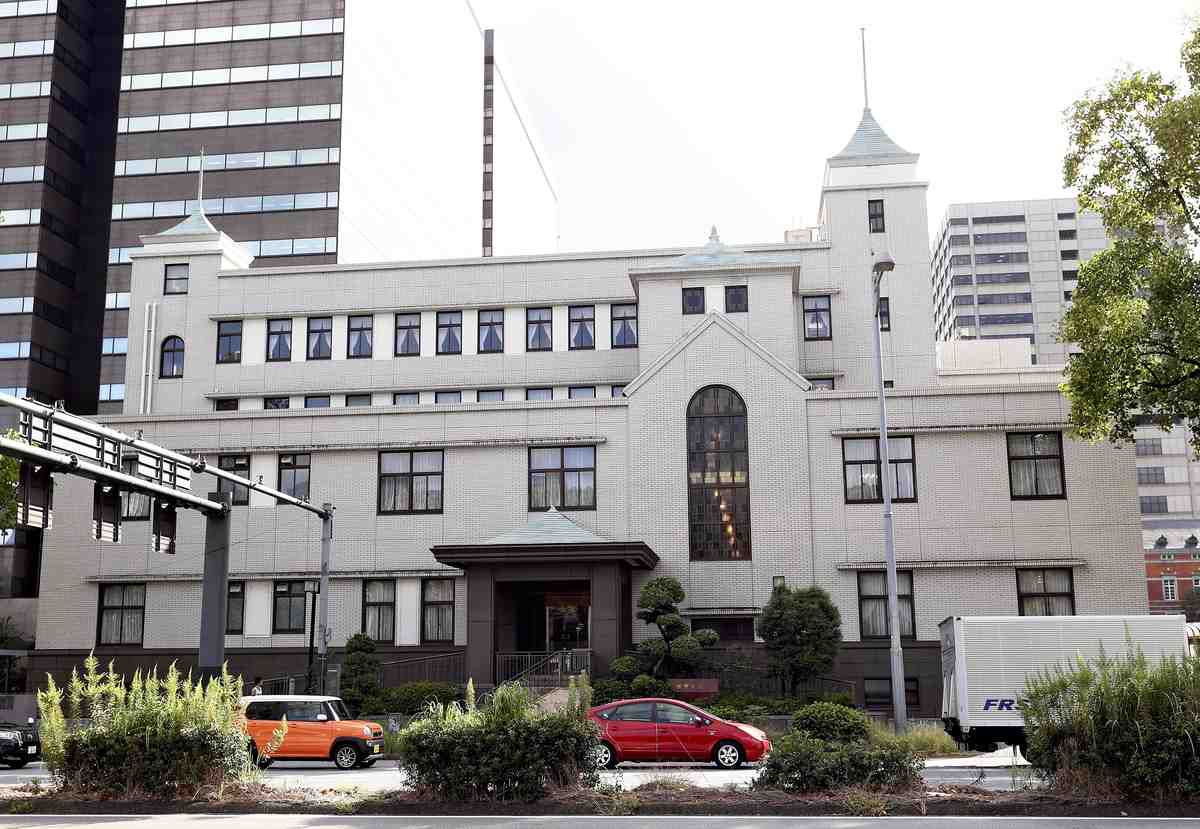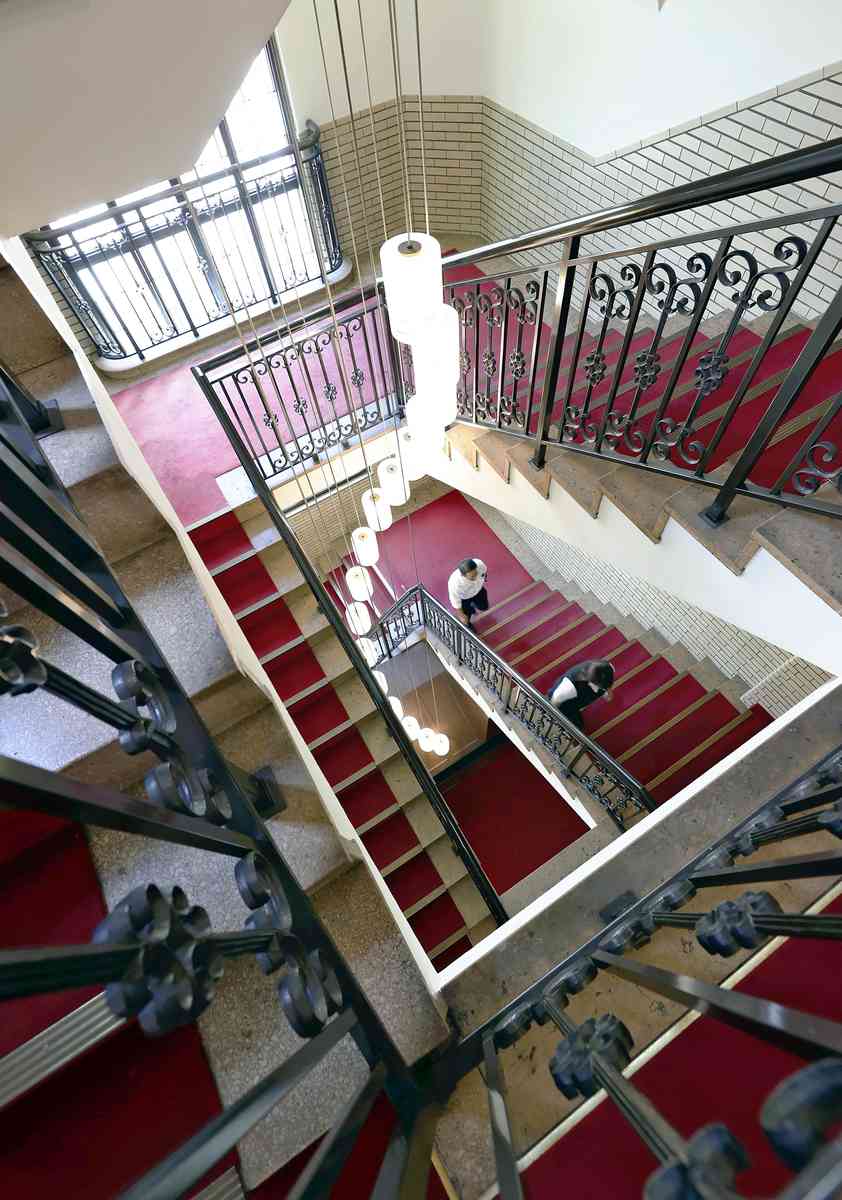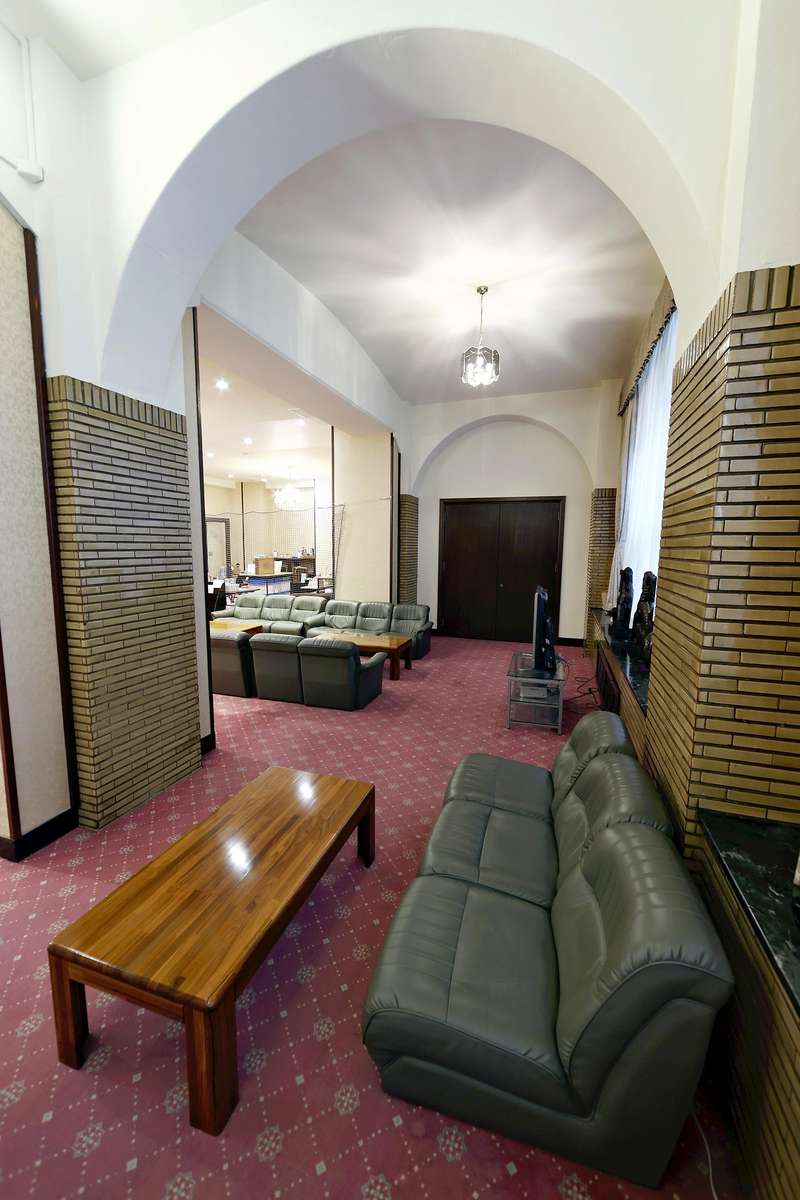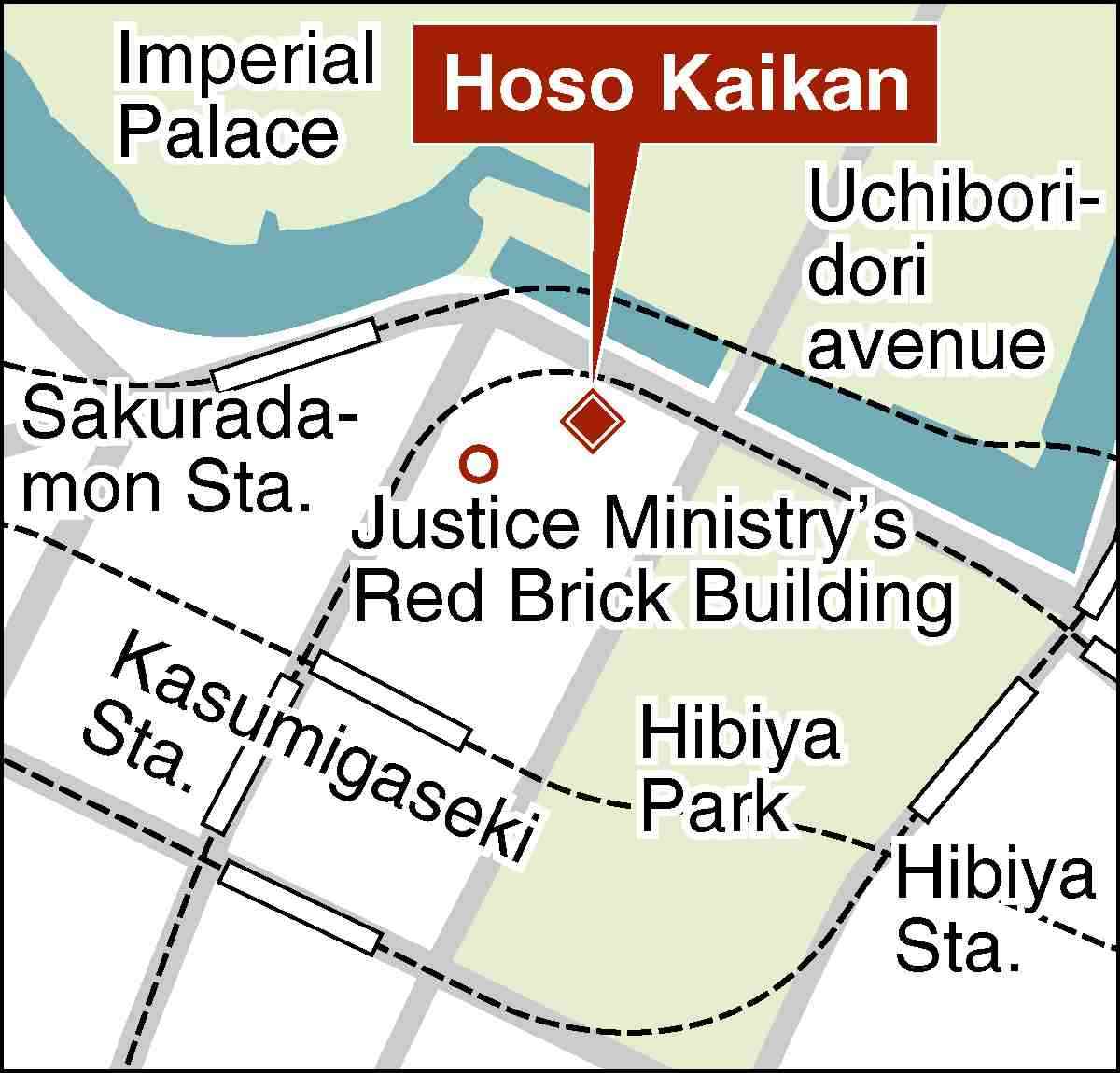Tokyo Building Carries Weight of Japan’s Legal History; Beautiful Lighting Fills Building that Survived Flames of War

The Hoso Kaikan building exudes a stately air.
10:27 JST, November 26, 2024

The original Showa-period marble steps and tiles remain. The stairs are decorated with red carpet.
Surrounded by the Imperial Palace moat and Sakuradamon Gate, as well as the Justice Ministry’s Red Brick Building and other structures, the Hoso Kaikan building, with its distinctive green roof, creates an air of monumentality in its surroundings in Chiyoda Ward, Tokyo.
It was built in the early years of the Showa era (1926-1989) as a place for social interaction for members of the legal community. The Hoso Kaikan has also been used as a banquet hall and wedding hall.
The Italian marble used in the rectangular, red-carpeted staircase and the tiles on the walls inside the Hoso Kaikan have been there since the building’s construction. Visitors can feel the weight of history with each step up the stairs.
Thanks to the wondrous light fixtures and natural light that pours in through the stained glass windows, the building is said to be a popular spot for wedding photography, too.

The Takasago no Ma banquet hall
On the second floor, visitors can enjoy a panoramic view of the Red Brick Building from the Takasago no Ma, the largest banquet room in the building. Luxurious chandeliers and walls decorated with crane motifs give the room a Showa era atmosphere.
The Hoso Kaikan was completed in 1936 as a place for law research activities and personal exchange among the members of Hosokai, an association of judges, prosecutors and other judicial officials.
The building avoided fire damage during World War II, though surrounding government offices were burned down in air raids.

The lobby of the building, where a courtroom was previously located, has an old-fashioned ceiling arch and tiles.
Part of the Hoso Kaikan was used as a courtroom of the supreme court for about two years immediately after the war ended. That room now serves as a lobby furnished with a solid, light green sofa made with prisoner labor.
The Hoso Kaikan is also associated with Yoshiko Mibuchi (1914-84), one of the first Japanese women to become a lawyer and inspiration for the main character of “Tora ni Tsubasa” (The Tiger and Her Wings), NHK’s serialized morning drama. Mibuchi also worked as a judge.
The then Justice Ministry’s personnel and civil affairs departments were temporarily located in the building after the war. It is the place where Mibuchi applied for a job at the ministry, aiming to become a judge. Mibuchi is said to have also worked as a ministry official at the building.
The Hosokai was established in the Meiji era (1868-1912). Since there were few legal precedents immediately after the promulgation of the Constitution of the Empire of Japan and the Constitution of Japan, the association provided Hosokai members with interpretations of laws that they were unsure of in the form of the Hosokai Ketsugi, or Hosokai resolutions.
Now, Hosokai publishes collections of commentaries of precedents, member magazines and others.
“We want to gather the wisdom of legal professionals and use it to help bring about social stability through law,” said Tadashi Hinokawa, 61, an association official.
The weight of legal debates that have been held over the years is ingrained in the building.
***
Hoso Kaikan

Address: 1-1-1 Kasumigaseki, Chiyoda Ward, Tokyo
Access: 1-minute walk from Sakuradamon Station, 5-minute walk from Kasumigaseki and Hibiya stations
Hours: Open from 10 a.m. to 6 p.m. on weekdays (An application for admission is required at the information desk to enter the building.)
Related Tags
"Features" POPULAR ARTICLE
-

Sanrio to Open Museum in Yamanashi Pref. Dedicated to Founder, Exhibits Include Hello Kitty, Other Characters
-

Autumn Foliage Surrounds Visitors to Tokyo’s Showa Kinen Park
-

My Daughter No Longer Speaks to Me, But I Want to See Her and My Grandchild
-

Kumamoto: Public Bath Refurbished as Library Where You Can Chat, Take Photos
-

Frozen Vegetables: Demand Rises for Convenient, Tasty Domestic Produce
JN ACCESS RANKING
-

Tokyo Economic Security Forum to Hold Inaugural Meeting Amid Tense Global Environment
-

Keidanren Chairman Yoshinobu Tsutsui Visits Kashiwazaki-Kariwa Nuclear Power Plant; Inspects New Emergency Safety System
-

Imports of Rare Earths from China Facing Delays, May Be Caused by Deterioration of Japan-China Relations
-

University of Tokyo Professor Discusses Japanese Economic Security in Interview Ahead of Forum
-

Japan Pulls out of Vietnam Nuclear Project, Complicating Hanoi’s Power Plans

























